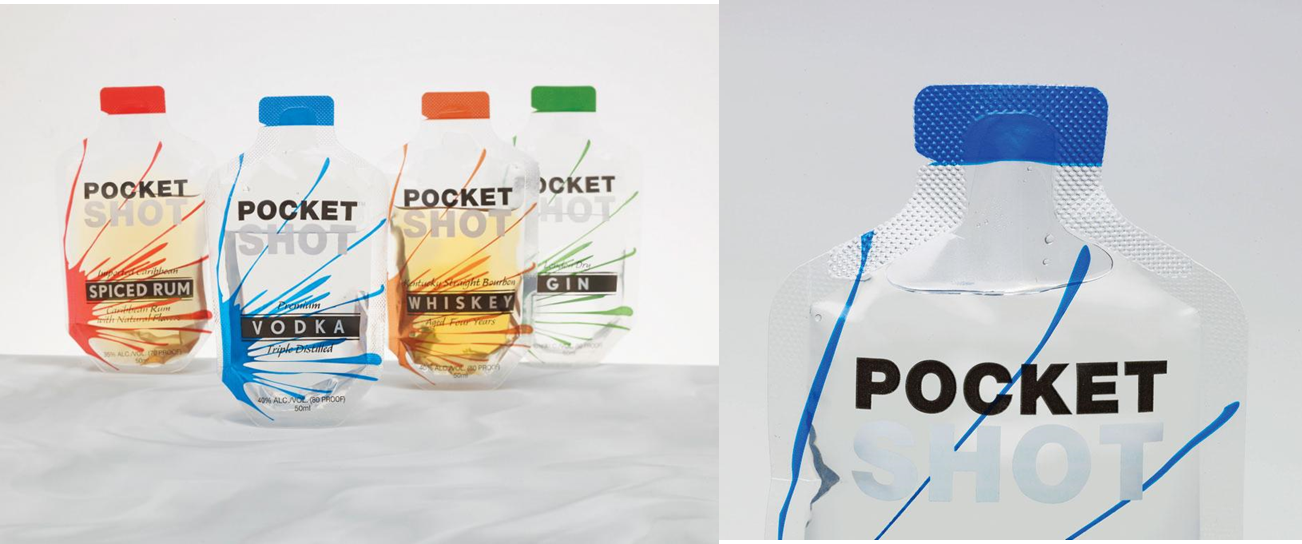Pocket Shot is 50-mL plastic packs small, unbreakable, easy-carry, easy-open, pocket-sized flexible “bottle” that stands up on a bottom gusset and it was introduced in 2006 by the Evergreen, CO-based company.
The pouch is an adhesive lamination of 48-ga (12 microns) oriented polyester/48-ga polyester coated with aluminum oxide/2.8-mil low-density polyethylene sealant layer that’s U.S. Food and Drug Administration-approved for contact with alcohol.
Amcor Flexibles Europe & America is the primary supplier of this pouch.
It is printed via both flexo and gravure printing methods and initially used a heat-seal process that first melted the plastic for joining, followed by a cold seal to prevent excess temperatures and smooth out voids and wrinkles created by the heat seal.
The company face the problem of leakage with the heat seal method and shifted to Ultrasonic sealing for the pouch by Branson Ultrasonics, part of Emerson Industrial Automation.
Branson Ultrasonics has partnered with Pocket Shot, to create a sealant to stop leakages during manufacture, transportation and distribution.
The ultrasonic action of the horn disperses the alcohol out of the seal area and allows the plastic to melt without the risk of triggering the flashpoint of alcohol.
It is suitable for the on-the-go lifestyles that were creating a growing demand for “single-serve” portions like Pocket Shot for many consumables.
Each pack has an opening along the top edge that must be sealed once the package has been filled with product. The top contour of the Pocket Shot package simulates a bottle top with a shoulder and cap—presenting a complicated geometry to seal. To avoid potential leaks, the sealing process needs to seal through alcohol caused by splash back on the sealing surfaces that occurs during filling.
A unique horn and anvil that perfectly matches the contoured sealing surfaces of the Pocket Shot produces clear, contaminant-free seals.
Adding complexity is that the seal process is temperature-sensitive, requiring Pocket Shot to avoid temperatures that might trigger the flash point of alcohol.
Branson designed a unique horn (through finite element analysis software) and anvil that perfectly matched the contoured sealing surfaces of the package top. When tested, prototype samples showed the ability of the ultrasonic sealing process to seal through the alcohol, producing a 100%-clean, clear, contaminant-free seal.
But the package production volume reached the necessary high-speed levels of 30+ packs/min, the hot-seal/cold-seal process resulted in frequent leaks, and lost productivity, which caused product recovery costs that threatened the viability of the product. Fortunately, few leakers actually made it to the retail level.
The prototypes also demonstrated the process could maintain the integrity of the seal under the high-volume cycle time of one seal every 2 seconds.








